
Sign up for daily news updates from CleanTechnica on email. Or follow us on Google News!
Last Updated on: 3rd February 2025, 01:17 pm
Mark Z. Jacobson from Stanford University has explained why investments in wind, water, and solar are the only feasible ways to convert the US and the world to clean energy. However, even the best technologies come with environmental impacts. With encouragement from the federal government, private industry has recently made huge investments in solar and wind farms in the US. However, wind turbines kill birds and solar panels interfere with ground habitats. But, compared with burning fossil fuels, these impacts are small.
What about water, otherwise known as hydropower? 6% of US electricity now comes from hydropower, and it accounted for about 27% of utility-scale electricity generation from renewable sources in 2023. The total installed hydropower capacity for 2020 was 102,800 megawatts. Almost 96% comes from large hydropower plants. The top three hydroelectric producers in the US are 1) The Grand Coulee Dam on the Columbia River in Washington State with 6,809 megawatts, 2) the Robert Moses Niagara Power Plant at Niagara Falls in New York with 2,675 megawatts, and 3) Chief Joseph run-of-the-river power plant with a capacity of 2620 megawatts, also on the Columbia River. In addition, the Hoover Dam on the Colorado River just outside Las Vegas, Nevada, produces 2,080 megawatts. These 4 plants produce 13% of total US hydropower. Note the first significant power plant in the US was the Niagara Falls Power Company, Adams Power Plant, which was built between 1900 and 1904, with a total capacity of 78 megawatts.
What was the environmental impact of the Grand Coulee Dam which first blocked off the Columbia River in 1938? It cut off an annual fishery of over 10 million salmon. The dam was, and still is, almost twice the size of the next largest producer of clean hydroelectric power in the US, but at a huge environmental cost.
My father was a limnologist (fish professor) at the University of Wisconsin who became famous when he discovered how salmon find their way back to their home stream. He did his definitive experiment, stuffing the noses of salmon, on Issaquah creek just east of Seattle, Washington, in 1952.

I was 12 years old when our family drove west from Madison, Wisconsin, in 1952 to accompany him while he did his experiment. En route, we stopped at the Grand Coulee Dam on the Columbia River, which had quite recently cut off thousands of miles of salmon spawning grounds because it was too tall for fish ladders to be effective. However, 80 years later, there is hope for the future. A new technology called the salmon cannon is being tested to shoot adult salmon over even the tallest dams. Think of the pnuematic tube that sends your paperwork above you to the bank building when you are at a drive-through terminal. The photo below compares a conventional fish ladder used for smaller dams with the salmon cannon, which can fire a salmon over the tallest river blockage.
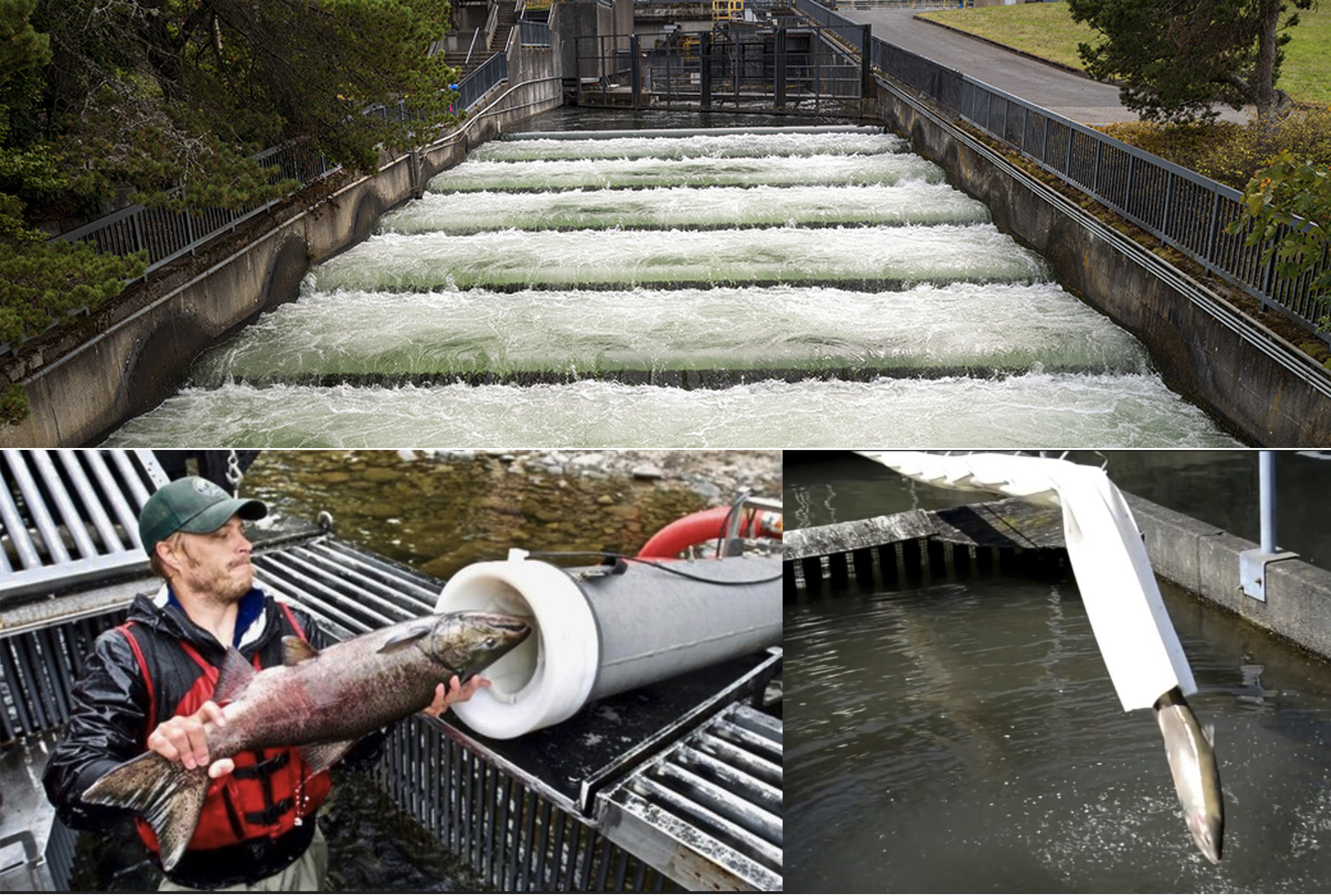
For comparison, the Bath County storage facility in Virginia was the largest pumped storage facility in the world with a capacity of 3,003 megawatts, until quite recently when it was surpassed by one in China. Why have there been no recent investments in large hydropower plants in the US? The reason is that there are no suitable river locations in the US for new ones. If there would be any action in this area in the future in the US, it would be to remove large hydropower dams to restore salmon spawning runs and let rivers run free again.
Is there another alternative for hydropower development? What about small hydropower? Total US hydropower generation capacity has remained fairly constant in recent decades at 80 GW, which includes 3.6 GW of small hydro.
There is a both historical and modern small hydropower plant location between Mount Timpanogos and Cascade Mountain at the mouth of Provo Canyon in Orem, Utah, 3 miles from my house in Lindon, Utah. The photos below show Mount Timpanogos and Cascade Mountain. Mountains are very efficient at stripping water out of the atmosphere as rain and snow fall. The hydropower plant gets its water from those mountains via the Provo River, which was first dammed to produce power in 1898.
Hydropower has the advantage of still being able to make power when the sun doesn’t shine and the wind doesn’t blow. However, hydropower is at least partially dependent on rainfall. Dams in the southwest US are making power at reduced rates because of decades-long droughts. The small hydropower plant in Orem is somewhat isolated from precipitation rates because of two quite large reservoirs above it that store the spring snow melt and keep water flowing all year long.
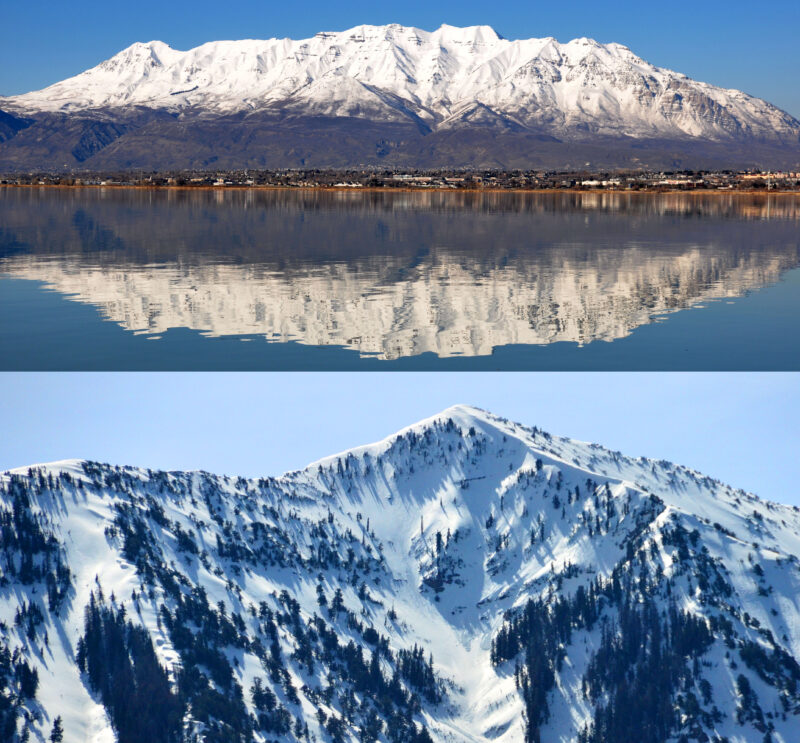
In 1904, the plant was moved to the mouth of Provo Canyon and named for Fay Devaux Olmsted, who was instrumental in its design. The photo below shows the original Olmstead power plant with three steel flumes coming down the cliff into the power station. This is the station as I remember it coming from Wisconsin to Utah in the 50s with my parents as a child to visit my grandparents. You can also see the Heber Creeper train coming out of Provo Canyon on its way to Provo. The railbed has since been converted into a bike path which I use routinely to travel up the canyon on my e-bike. The Heber Creeper still runs as a tourist railway further up the canyon. The original flume that brought water down the canyon to the power station was made of wood. However, it was replaced later with a steel pipe.
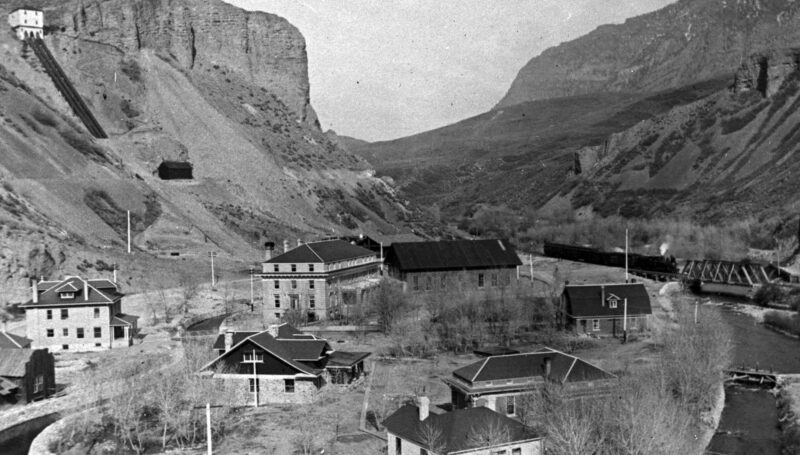
The Olmsted hydropower plant was decommissioned in 2004, the year I retired from NASA on the east coast and moved to Utah. It was rebuilt, and began producing 11.5 megawatts of power again in 2018. The photo below shows the new power house and electrical substation.

The photo below on the left shows another part of the new power station. Below on the right you see a concrete section of the flume further up the canyon.
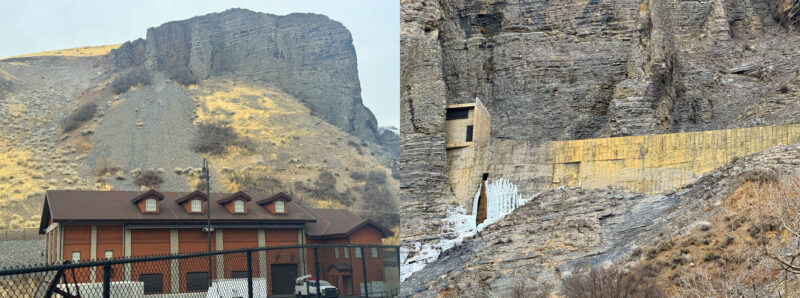
The cross-section diagram below shows how water is delivered to the power house.

The effluent from the power house was directed into the Murdock canal, which took the water 25 miles north to farmers in Salt Lake County. The photo below shows how the canal was buried into a 10.5 ft pipe in 2011. It was covered by a beautiful blacktop bike trail which I bike on regularly. It runs north to connect with the Jordan River trail for a total of 30 miles to Salt Lake City, Utah.
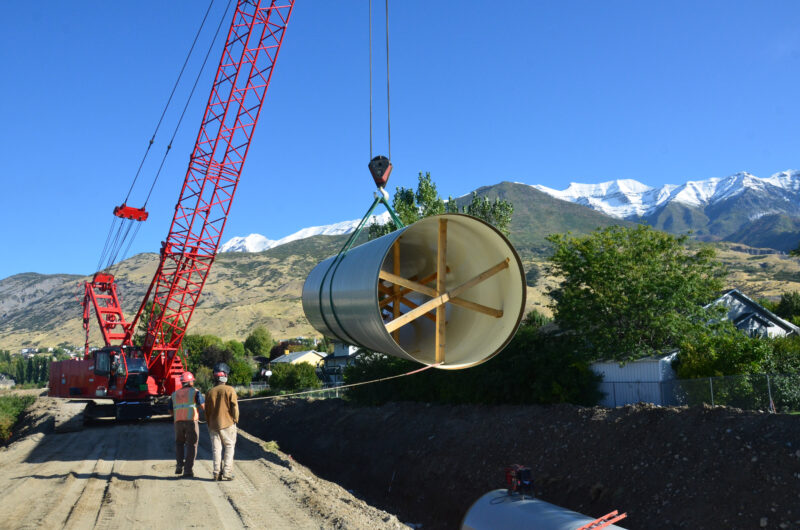
What would it take to make small hydro a significant part of new clean energy in the US? It would take almost 600 power plants the size of the Olmsted to equal the power production of the Grand Coulee Dam. Based on the report below, potential conventional small hydro is not enough to add significantly to US electrical production. There are certainly rivers in other countries which could be tapped using conventional hydropower technology, but not in the US. Going forward, current US hydro needs to be maintained, but cannot be significantly increased. However, potential unconventional hydro, like river-run, might be enough to tip the scale.
Key US electricity and hydropower facts (2017)
- Total US electricity generating capacity: 1,084,783 megawatts
- Total installed hydropower capacity: 80,089 megawatts across 2,248 plants
- Note: Grand Coulee Dam hydropower capacity: 6,809 megawatts
- Total installed small hydro capacity: 3,612 megawatts across 1,646 plants
- Untapped small hydro technical potential at non-powered dams 2,500 megawatts
- Untapped small hydro technical potential for new stream-reach development: 4,321 megawatts
- 2017 planned small hydro projects: 420 MW across 165 projects
Tesla has reactivated its referral program. If you find any of my articles helpful to you, please use my referral link: https://ts.la/arthur73734. If you are buying a new Tesla and use my link (Be sure to use it when you make your order) you’ll receive $1,000 off your purchase price and 3 months of Full Self-Driving. It is technically FSD Beta and it will drive you automatically to any address you enter into the Navigation. (Just be prepared to intervene immediately if it screws up)
Chip in a few dollars a month to help support independent cleantech coverage that helps to accelerate the cleantech revolution!
Have a tip for CleanTechnica? Want to advertise? Want to suggest a guest for our CleanTech Talk podcast? Contact us here.
Sign up for our daily newsletter for 15 new cleantech stories a day. Or sign up for our weekly one if daily is too frequent.
CleanTechnica uses affiliate links. See our policy here.
CleanTechnica’s Comment Policy




